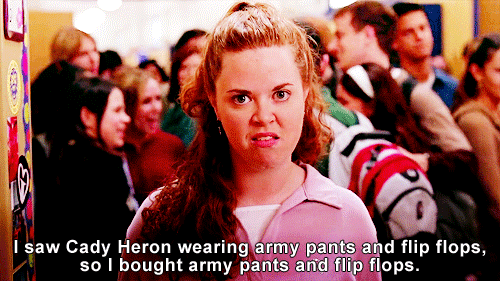5 reasons to ditch the flip-flops this summer

Nothing says summer like showing-off a fresh pedicure in a pair of T-strap sandals or flirty flip-flops, right? You may even pat yourself on the back for ditching the often-painful stilettos in favour of open-toe flatted footwear. But many experts agree that, as comfy as they are, flip-flops simply don’t provide the proper support for your feet. This could lead to foot and ankle injuries and make you more susceptible to injury.
“The ultimate health of your knee, hip, and lower back is ultimately related to the strength of the muscles of your feet,” says Dr. Jason Lemieux, chiropractor and owner of Physiomed in Oakville, Ont. “Flip-flops are OK for some people, if you have a foot that functions properly…the downside obviously is there’s no stability for it at all.”
Who’d a thought that flip-flops could turn out to be more of a, well, flop? Here are five reasons why wearing flip-flops are wreaking havoc on your feet:
They can cause foot pain and inflammation: Most flip-flops don’t provide proper foot stability or arch support, which can cause you to walk differently than you normally would in a supportive shoe. This might lead to tension at the bottom of your foot, and can also make you more susceptible to plantar fasciitis, Achilles tendonitis and other kinds of ugly foot and ankle problems.
“[Flip-flops] aren’t offering you any stability—which is OK if you’re somebody who has a lot of stability. But the majority of North Americans don’t, so that becomes a problem,” notes Lemieux.
Wearing flip-flops (and other bad footwear) can cause fallen arches
Lemieux says that people who are prone to wearing flip-flops during the warmer months probably wear non-supportive footwear in the winter as well—such as sheepskin boots, like Uggs, which Lemieux aptly dubs “glorified socks.”
“There’s really nothing stable about (these boots),” says Lemieux. “If you’re ever at a mall and you are walking behind a group of people who are wearing (them), you can see that the inside of their ankles are almost touching the floor. Everything collapses to the inside—you’ll see that their arches collapse, their ankles are collapsing, which is going to cause knee problems and back problems—it throws everything out of whack. That’s winter. And then comes summer and they throw their flip-flops on. So they’ve had no stability all winter, and now they come to the summer, and they still have none.”
They can give you gnarly bunions
According to Lemieux, not having good fundamental foot support from the arch, either because your muscles don’t support your arch or you don’t have proper support from your flip-flops, can cause your arch to collapse inward and your big toe to rotate outward. This can encourage the development of painful bunions.
They expose your open feet to harmful bacteria
Open cuts or scratches (like between your toes where the strap is located on the flip-flop) can further irritate the wound, expose it to bacteria and open up the possibility for infection. Lemieux says that it depends on where — and for how long — you wear your flip-flops that matters. “(Not) taking care of the flip-flops or wearing them at inappropriate times could result in bacteria. It’s one thing if you’re just on the beach or you’re on vacation, (but) if you’ve got to run to the bus and you’re wearing flip-flops, that’s what’s the problem.”
They can contribute to bad posture
Lemieux says that it’s not so much the flip-flops that cause poor posture, but moreso the person who is wearing the flip-flops when they shouldn’t be. Since flip-flops don’t provide proper stability, as soon as your arch collapses down, it rolls your legs slightly in, and then that brings your hips somewhat forward. “That totally screws up the posture,” says Lemieux. “Just like wearing high heels can mess your posture from the ground up — wearing flip-flops can mess your posture from the ground up.”

Flip-flops with arch support, orthotic sandals, or orthotics (foot support shoe inserts) are potential alternatives to traditional flip-flops for the summer. Still, Lemieux suggests consulting with an expert about personalized footwear since there is no one-style-fits-all available for everybody.
“It is very dependent on the individual’s foot,” he says, noting that people need to be aware that they can also strengthen the muscles of their feet. “So, (for example) somebody who has a collapsed arch — if you get educated or work with the right person, you can rebuild the muscles of your feet (which can) allow you to wear flip-flops in a safer manner.”

